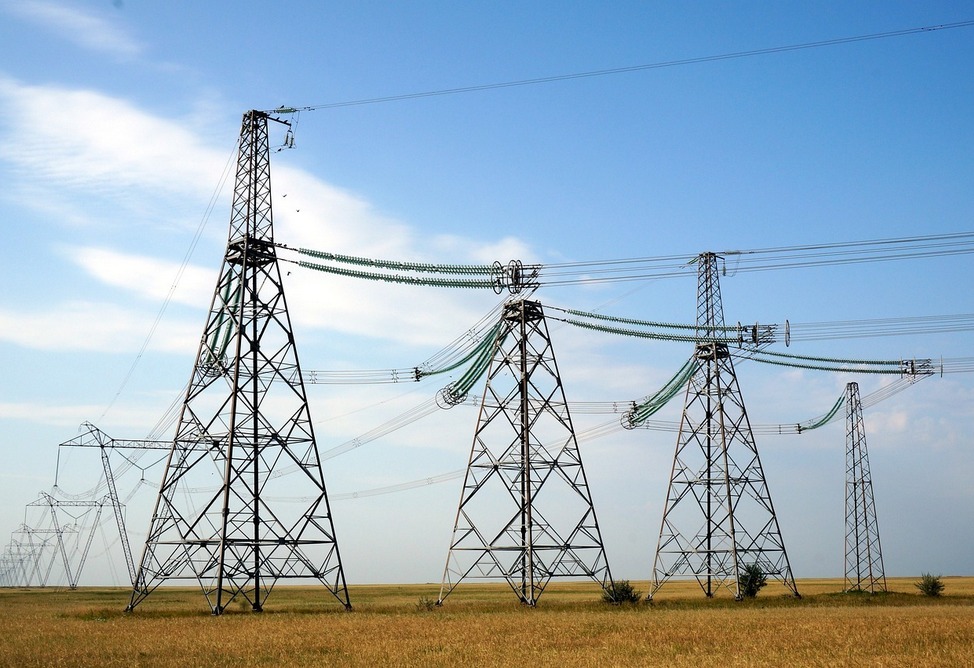World Bank revises Armenia growth outlook for 2019 from 5.5 percent to 6.9 percent
16.12.2019,
18:50
Armenian GDP grew by a strong 7.9 percent year-on-year (yoy) in the third quarter of 2019, the World Bank said in Armenia Monthly Economic Update for December 2019.

YEREVAN, December 16. /ARKA/. Armenian GDP grew by a strong 7.9 percent year-on-year (yoy) in the third quarter of 2019, the World Bank said in Armenia Monthly Economic Update for December 2019.
It said this brings the cumulative GDP growth in 2019 through September to 7.5 percent yoy, driven largely by private consumption. Importantly, net export and capital formation, which stagnated at the start of the year, had positive, albeit modest, contributions to growth (0.7 percentage points (pp), each), which helped compensate for the decline in public consumption.
On the production side, most of growth (5.5 pp) came from trade and services and the rest from industry (mainly manufacturing (1 pp), mining (0.6 pp) and construction (0.3 pp). Manufacturing grew by 9 percent, while output in mining rebounded by 18 percent yoy, as the sector continued to recover from the production disruptions in 2018. Agriculture continues to contract. These trends continued in October with the Economic Activity Index increasing by 7.7 percent, yoy.
Mining growth moderated from very high 70 percent in September to 30 percent. Construction growth accelerated slightly to 5 percent, yoy, while services (excluding trade) continued to expand fast (by 12 percent yoy). Based on the strong performance of the economy so far in 2019, the real GDP growth projection is upgraded to 6.9 percent( from 5.5 percent in mid-2019).
Inflation in November continued to edge upwards. Consumer prices increased by 1 percent in November yoy, up from 0.9 percent annual inflation in the previous month, but still below the lower bound of the target range of the Central Bank of Armenia (CBA) of 4 +/-1.5 percent.
Food, alcoholic beverages, utilities, transport and health expenses equally contributing to the 1 percent inflation. The average annual inflation rate in the year-to-November 2019 remained at 1.5 percent. Monetary conditions unchanged in November. With imports growing strongly and exports moderating, the trade deficit widened. After growing by 33 percent yoy in September, exports in October grew by only 1.3 percent yoy.
The sharp adjustment was due to slower, though at 30 percent yoy still very strong growth of export of precious stones and metals (mostly gold). Minerals (copper) account for 28 percent of exports, followed by agriproducts (23 percent) and precious stones and metals (15 percent).With this, the cumulative growth of exports in the ten months of 2019 reached 7.2 percent. Import growth also slowed down in October, but at 15 percent yoy remains robust. This brought the cumulative growth of imports to 6.2 percent in the first ten months of 2019.
Excluding import of vehicles (which grew by 70 percent), imports grew by only 1 percent. The appreciating pressures on the dram dissipated. The wider trade deficit was partly off-set by stronger transfers from abroad, tourism proceeds as well as unrecorded re-exports lowered the financing needs. Still, the dram, which was remarkably stable since June 2019, weakened by around 0.3 percent during November. International reserves declined slightly in November, but at US$2.4 billion remain high by historical standards.
The Budget registered a 0.5 percent of annual GDP deficit in October. With this, the surplus in the year-to-October declined to 0.9 percent of GDP; still a considerable over performance compared to the annual budget deficit plan of 2 percent of GDP.
The October deficit is due to acceleration in capital spending as well as moderating revenue growth. Capital expenditures were up 40 percent yoy; partly compensating for the slow performance earlier in the year. Still, less than half of the capital spending planned with the budget had been executed in the year-to-October. Revenue growth was almost flat in October, though still up by 19 percent yoy in the year-to-October. Government debt (excluding CBA) at end-October 2019 was around 47.5 percent of projected annual GDP, down from 51.3 percent of GDP at the end of 2018.
The Parliament approved the revised 2020 budget which targets a deficit of 2.3 percent of GDP. Recently, in response to recent favorable trends, Fitch Ratings upgraded Armenia's Long-Term Foreign-Currency Issuer Default Rating to “BB-”from “B+” and set the Outlook as Stable.
The poverty rate declined to 23.5 percent in 2018 from 25.7 percent in 2017. The reduction was more pronounced in rural areas and Yerevan, while in secondary cities the poverty rate increased. Credit and deposits grew by above 15 percent yoy in October, with deposits growth slightly outpacing credit expansion. Both, the loan and the deposit portfolios growth was a result of the local currency component, thus helping to reduce the dollarization rate.
GDP growth remains strong, fueled by private consumption. Inflation has been slowly edging upwards. Strong growth in imports of vehicles and lower gold exports widened the trade deficit. The Budget recorded a 0.5 percent of GDP deficit in October but remains in surplus year-to-date. The poverty rate fell from 25.7 percent in 2017 to 23.5 percent in 2018. The government's growth projection for this year is 4.9%. -0-
It said this brings the cumulative GDP growth in 2019 through September to 7.5 percent yoy, driven largely by private consumption. Importantly, net export and capital formation, which stagnated at the start of the year, had positive, albeit modest, contributions to growth (0.7 percentage points (pp), each), which helped compensate for the decline in public consumption.
On the production side, most of growth (5.5 pp) came from trade and services and the rest from industry (mainly manufacturing (1 pp), mining (0.6 pp) and construction (0.3 pp). Manufacturing grew by 9 percent, while output in mining rebounded by 18 percent yoy, as the sector continued to recover from the production disruptions in 2018. Agriculture continues to contract. These trends continued in October with the Economic Activity Index increasing by 7.7 percent, yoy.
Mining growth moderated from very high 70 percent in September to 30 percent. Construction growth accelerated slightly to 5 percent, yoy, while services (excluding trade) continued to expand fast (by 12 percent yoy). Based on the strong performance of the economy so far in 2019, the real GDP growth projection is upgraded to 6.9 percent( from 5.5 percent in mid-2019).
Inflation in November continued to edge upwards. Consumer prices increased by 1 percent in November yoy, up from 0.9 percent annual inflation in the previous month, but still below the lower bound of the target range of the Central Bank of Armenia (CBA) of 4 +/-1.5 percent.
Food, alcoholic beverages, utilities, transport and health expenses equally contributing to the 1 percent inflation. The average annual inflation rate in the year-to-November 2019 remained at 1.5 percent. Monetary conditions unchanged in November. With imports growing strongly and exports moderating, the trade deficit widened. After growing by 33 percent yoy in September, exports in October grew by only 1.3 percent yoy.
The sharp adjustment was due to slower, though at 30 percent yoy still very strong growth of export of precious stones and metals (mostly gold). Minerals (copper) account for 28 percent of exports, followed by agriproducts (23 percent) and precious stones and metals (15 percent).With this, the cumulative growth of exports in the ten months of 2019 reached 7.2 percent. Import growth also slowed down in October, but at 15 percent yoy remains robust. This brought the cumulative growth of imports to 6.2 percent in the first ten months of 2019.
Excluding import of vehicles (which grew by 70 percent), imports grew by only 1 percent. The appreciating pressures on the dram dissipated. The wider trade deficit was partly off-set by stronger transfers from abroad, tourism proceeds as well as unrecorded re-exports lowered the financing needs. Still, the dram, which was remarkably stable since June 2019, weakened by around 0.3 percent during November. International reserves declined slightly in November, but at US$2.4 billion remain high by historical standards.
The Budget registered a 0.5 percent of annual GDP deficit in October. With this, the surplus in the year-to-October declined to 0.9 percent of GDP; still a considerable over performance compared to the annual budget deficit plan of 2 percent of GDP.
The October deficit is due to acceleration in capital spending as well as moderating revenue growth. Capital expenditures were up 40 percent yoy; partly compensating for the slow performance earlier in the year. Still, less than half of the capital spending planned with the budget had been executed in the year-to-October. Revenue growth was almost flat in October, though still up by 19 percent yoy in the year-to-October. Government debt (excluding CBA) at end-October 2019 was around 47.5 percent of projected annual GDP, down from 51.3 percent of GDP at the end of 2018.
The Parliament approved the revised 2020 budget which targets a deficit of 2.3 percent of GDP. Recently, in response to recent favorable trends, Fitch Ratings upgraded Armenia's Long-Term Foreign-Currency Issuer Default Rating to “BB-”from “B+” and set the Outlook as Stable.
The poverty rate declined to 23.5 percent in 2018 from 25.7 percent in 2017. The reduction was more pronounced in rural areas and Yerevan, while in secondary cities the poverty rate increased. Credit and deposits grew by above 15 percent yoy in October, with deposits growth slightly outpacing credit expansion. Both, the loan and the deposit portfolios growth was a result of the local currency component, thus helping to reduce the dollarization rate.
GDP growth remains strong, fueled by private consumption. Inflation has been slowly edging upwards. Strong growth in imports of vehicles and lower gold exports widened the trade deficit. The Budget recorded a 0.5 percent of GDP deficit in October but remains in surplus year-to-date. The poverty rate fell from 25.7 percent in 2017 to 23.5 percent in 2018. The government's growth projection for this year is 4.9%. -0-



